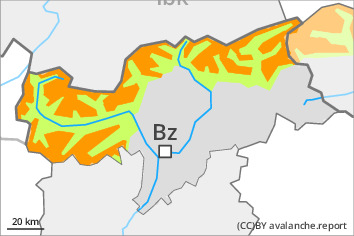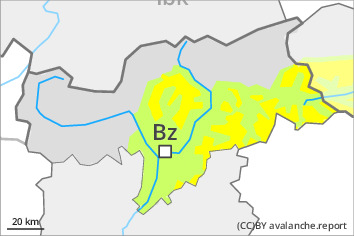
Danger level
 | 2200m |
|  |
|  | ||||
|  |
|  |

Wind slabs and weakly bonded old snow require caution.
Weak layers in the old snowpack can be released in some places by winter sport participants at transitions from a shallow to a deep snowpack, when entering gullies and bowls for example. This applies on very steep slopes above approximately 2200 m. Avalanches can reach large size in isolated cases. Meticulous route selection is recommended.
The fresh wind slabs are prone to triggering in particular on northwest to north to east facing aspects above approximately 2200 m. Caution is to be exercised in particular adjacent to ridgelines.
In addition a latent danger of gliding avalanches exists. This applies on steep grassy slopes below approximately 2400 m. Areas with glide cracks are to be avoided.
Snowpack
dp.4: cold following warm / warm following cold
dp.6: cold, loose snow and wind
Faceted weak layers exist in the centre of the snowpack in particular above approximately 2200 m. The fresh wind slabs are lying on soft layers in particular on near-ridge shady slopes at high altitudes and in high Alpine regions.
The new snow is lying on a crust below approximately 2600 m. Towards its base, the snowpack is moist, in particular below approximately 2500 m.
Tendency
The avalanche danger will decrease gradually.



